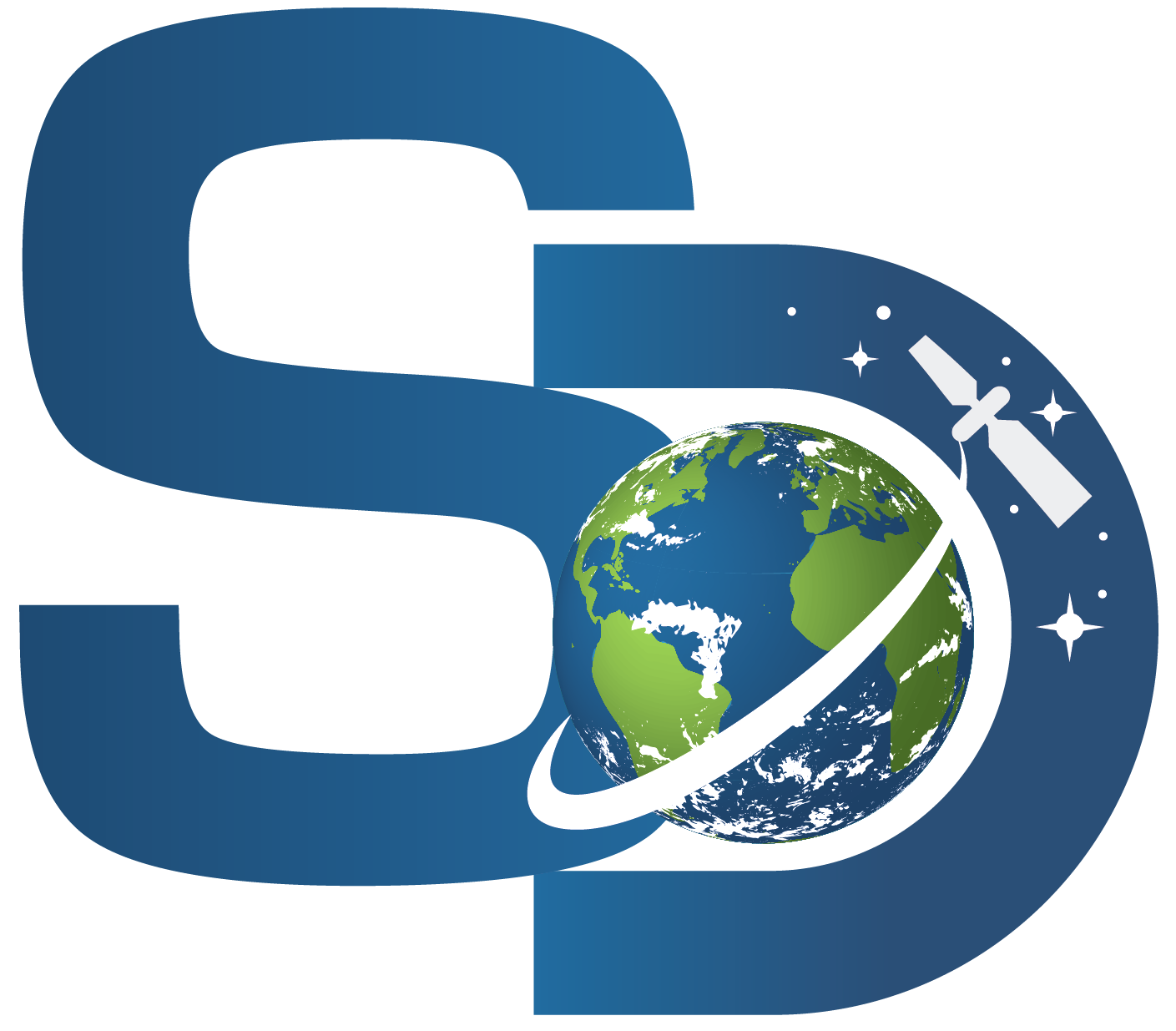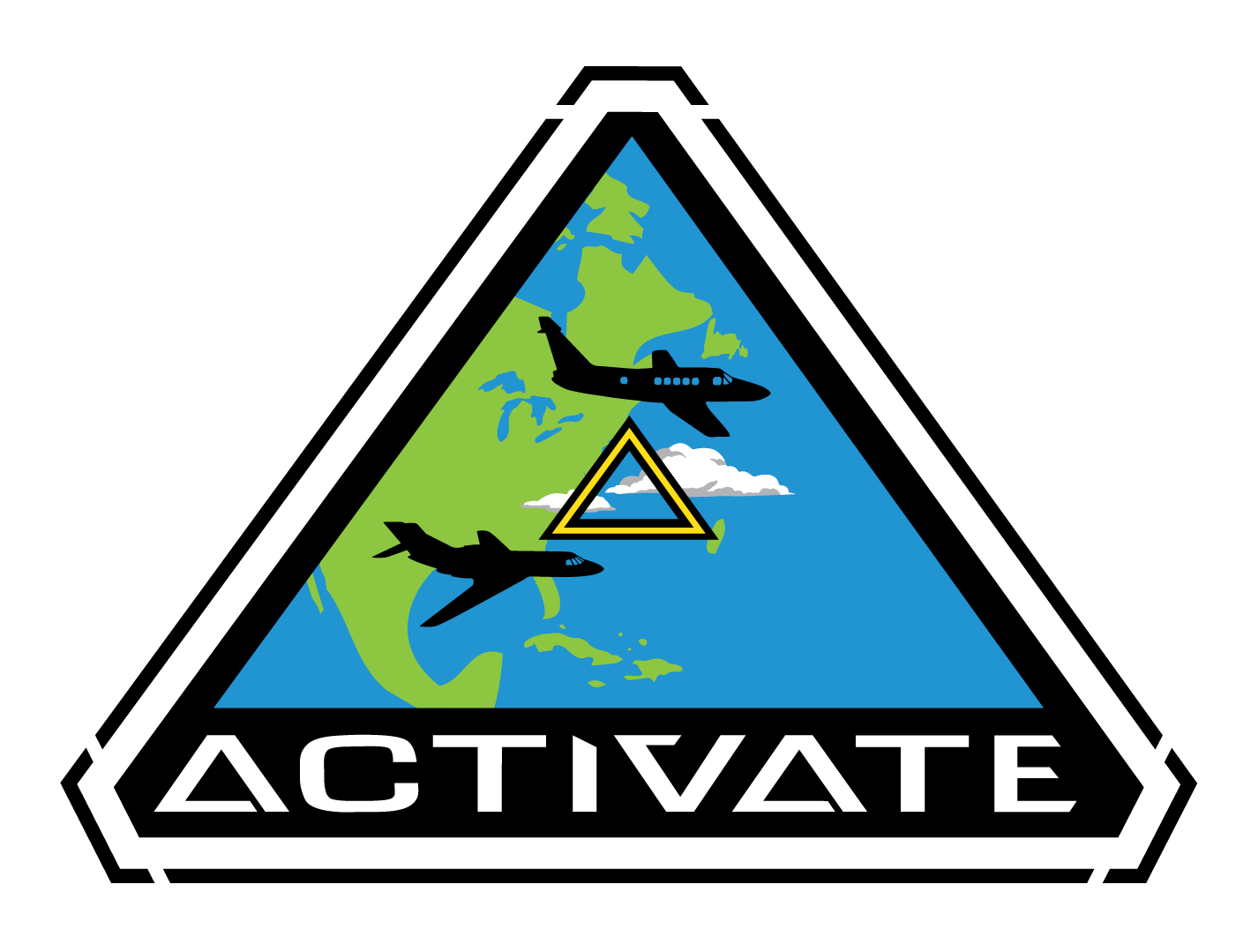GEO-CAPE Events: 2008 Science Definition Planning Workshop
GEO-CAPE: Geostationary Coastal and Air Pollution Events
Science Definition Planning Workshop
August 18-20, 2008
University of North Carolina – Friday Center, Chapel Hill, NC
Review Documents
NASA GEO-CAPE Workshop Report 11.28.2008 Working Draft [PDF]
GMES Sentineels 4 and 5 Mission Requirements Document [PDF]
Earth’s Living Ocean: ‘The Unseen World’ OBB Report [PDF]
Science Enabled by New Measurements of Ocean Properties from Geostationary Orbit [PDF]
NASA Top-level Science Question [PDF]
Coastal Ocean Carbon Observations and Applications(COCOA) Mission Concept [PDF]
Earth Sciences from the Astronomer’s Perspective, a Deep Space Climate Observatory (DSCOVR) Mission Concept [PDF]
Air Quality Remote Sensing From Space, EOS Reprint [PDF]
GEO-CAPE Mission Overview [PDF]
GeoMAC Final Report [PPT – 15.4MB]
NRC Decadal Study on Earth Science and Applications from Space: Earth’s First Time Resolved Mapping of Air Pollution Emissions and Transport from Space [PDF]
Observations of Tropospheric Air Chemistry Processes from a Geostationary Perspective [PDF]
An Advanced Earth Science Mission Concept Study:
Geostationary Multi-discipline Observatory [PPT – 21.7MB]
Decadal Survey Submission: Exploration of the Earth-Sun System from L-1 [PDF]
Spatial and Spectral Resolution Considerations for Imaging Coastal Waters [PDF]
Potential for calibration of geostationary meteorological satellite imagers using the Moon [PDF]
Robust IR Remote Sensing for Formaldehyde, Carbon Monoxide, Methane, and Ozone Profiles [PDF]
Meeting Agenda
| Day 1, Morning | |||
| 8:00 – 8:30 | Registration | ||
| 8:30 – 8:40 | Welcome/Intro/Objectives of workshop | Ken Jucks/Paula Bontempi | NASA HQ |
| 8:40 – 8:50 | Mission Directives | Steve Volz | NASA HQ |
| 8:50 – 9:20 | Atmospheric Composition from the Geo Perspective | Jack Fishman | NASA LaRC |
| 9:20 – 9:50 | Ocean Biogeochemistry from the Geo Perspective | Francisco Chavez | MBARI |
| 9:50 – 10:20 | Break | ||
| What’s in the Decadal Survey? | |||
| 10:20 – 10:50 | Air Quality/Atmospheric Composition | Daniel Jacob | Harvard |
| 10:50 – 11:20 | Ocean Biology/Biogeochemistry | Janet Campbell | UNH |
| 11:20 – 11:40 | Application perspective from EPA | Pai-Yei Whung | EPA |
| 11:40 – 12:00 | Application perspective from NASA | Lawrence Friedl | NASA HQ |
| 12:00 – 1:15 | Lunch Break | ||
| Day 1, Afternoon | |||
| 1:15 – 1:30 | Charge to breakout groups, outline of breakout activity, grouping, objectives. | Kawa/Fishman/Campbell | |
| 1:30 – 3:30 | Breakout session I (by discipline): | ||
| Articulate mission science questions and science objectives for each discipline Define observations/measurements (i.e., what needs to be measured) for these objectives Begin to define measurement requirements for observations needed Begin to outline potential synergies between different disciplines Open questions |
|||
| 3:30 – 4:00 | Break | ||
| 4:00 – 5:30 | Plenary joint session: report of breakout session I and discussion | ||
| Begin to identify interlocking and interdependent mission objectives and requirements Inform each discipline of the other’s objectives and requirements |
|||
| Early Evening: | Posters and side discussions | ||
| Day 2, Morning | |||
| Synergies: Decadal Survey Missions, International Linkages/Partnerships, Cross-Disciplinary | |||
| 8:30 – 9:30 | Presentations on ESA Sentinel Series and others | ||
| Sentinel 3 – Ocean Observations | Samantha Lavender | ARGANS Ltd/ University of Plymouth |
|
| Sentinels 4 & 5, Geosynhronous Air Quality Observations & LEO observations | Rose Monro | Eumetsat | |
| Experience from SCIAMACHY and proposed GEOSCIA | Heinrich Bovensmann | Bremen | |
| 9:30 – 10:00 | Synergies with the related DS missions | ||
| ACE | Schoeberl/McClain | GSFC | |
| GACM | Nathaniel Livesey | JPL | |
| 10:00 – 10:30 | Break | ||
| 10:30 – 11:30 | Overarching talks on perspective from applications perspective | ||
| EPA Air Quality perspective | Rob Pinder | EPA | |
| NOAA Air Quality perspective | Mitch Goldberg | NOAA | |
| NOAA Ocean pespective | Paul DiGiacomo | NOAA/NESDIS | |
| 11:30 – 12:00 | Reviews of previous NASA mission architecture studies | Randy Kawa | GSFC |
| 12:00 – 1:15 | Lunch | ||
| Day 2, Afternoon | |||
| 1:15 – 1:45 | Retrievals and Synergies | ||
| Overview talks by David Edwards (atmospheric) and Chuck McClain (ocean) | |||
| 1:45 – 4:30 | Potential measurements options for this mission (15 minute talks) | ||
| What is measurable by what remote sensing techniques? | |||
| a) Boundary layer O3 measurements in the UV/Vis. | PK Bhartia | GSFC | |
| b) O3 measurements in thermal IR (e.g., TES, AIRS). | Annmarie Eldering | JPL | |
| c) NO2 and CH2O measurements in the UV/Vis. | Kelly Chance | SAO | |
| d) CO measurements in NIR and emission bands. | David Edwards | NCAR | |
| e) Aerosol measurements (UV, vis, NIR). | Omar Torres | Hampton | |
| Break | |||
| f) Ocean biological properties | Ru Morrison | UNH | |
| g) Ocean biogeochemical properties | Carlos Del Castillo | APL | |
| h) atm correction, ocean color | Zia Ahmed | GSFC | |
| i) land sea interface | Joe Salisbury | UNH | |
| 4:30 – 5:30 | Discussion Session II (cross-discipline): Retrievals and Synergies | ||
| Goal: Refine disciplinary Observations and Measurement Requirements and determine Mission Requirements (e.g., spatial coverage, frequency). | |||
| Goal: Ocean/Atm synergy discussion: Regional aerosols, NOx, ozone and the possible aerial transport of nutrients to the coastal ocean are some topics of interest. | |||
| Early Evening: | Posters and side discussions | ||
| Day 3, Morning | |||
| 8:30 – 10:30 | Discussion III: Summary and Next Steps | Session will open with recap of discussion of days 1 and 2 | |
| Instrument requirements | |||
| Traceability matrix | |||
| Prioritizing future studies, both modelling and technology | |||
| Technology gaps | |||
| 10:30 – 11:15 | Break | ||
| 11:15 – 11:45 | Outline presentations of recap of Discussion III and start of workshop report | ||
| 11:45 – 12:00 | Closing by Ken and Paula | ||
Oral & Poster Presentations
(Listed in alphabetical order by primary author)
Atmospheric Science Questions [PDF]
Breakout Session : Air Quality [PPT]
Breakout Session : Oceans [PPT]
Atmospheric Correction Algorithms for Remote Sensing of Open and Coastal Waters [PPT]
Ahmad, Ziauddin; Science and Data Systems, Inc.
The panFTS Concept for the GEO-CAPE Mission
Beer, Reinhard; Jet Propulsion Laboratory
Boundary Layer O3 Measurements Using UV Wavelengths [PPT]
Bhartia, Pawan. K.; NASA Goddard Space Flight Center
Experience from SCIAMACHY and GeoSCIA [PPT][14.2MB]
Bovensmann, Heinrich ; —-
RAQMS-CMAQ Atmospheric Chemistry Model Data for the TexAQS-II Period:
Conceptual Framework for Generating GEO-CAPE Simulated Data
Byun, Daewon; University of Houston
Coastal Ocean Carbon Observations and Applications (COCOA) Mission Concept [PPT]
Campbell, Janet; University of New Hampshire
What is in the Decadal Survey? Ocean Biology/Biogeochemistry [PPT]
Campbell, Janet; University of New Hampshire
Pollution Monitoring from Geostationary Orbit in the Ultraviolet and Visible [PPT][51.4MB]
Chance, Kelly; Harvard-Smithsonian Center for Astrophysics
Ocean biogeochemistry and ecology from the GEO-CAPE perspective [PPT][10.7MB]
Chavez, Francisco ; Monterey Bay Aquarium Research Institute
How Well Can UV-Based Methods See Lower Tropospheric O3 from Space, and How Can We Do Better? – A Statistical Study
Chatfield, Robert; NASA Ames Research Center
Assessing Scales of Variability for GEO-CAPE Observations Based on Field Campaign Data
Crawford, James; NASA Langley Research Center
Analysis of Requirements for Geostationary Imaging of the Coastal Ocean by the NOAA Coastal Ocean Applications and Science Team (COAST)
Davis, Curtiss O.; Oregon State University
The Hyperspectral Imager for the Coastal Ocean (HICO) on the International Space Station
Davis, Curtiss O.; Oregon State University
Biogeochemistry from a Geostationary Ocean Color Sensor [PPT][11.5MB]
Del Castillo, Carlos E. ; The Johns Hopkins University Applied Physics Laboratory
GEO-CAPE & Ocean Color Observations: A NOAA Perspective [PPT][25.2MB]
DiGiacomo, Paul; NOAA/NESDIS
Tropospheric Carbon Monoxide Satellite Observations [PPT][19.2MB]
Edwards, David; National Center for Atmospheric Research
Tropospheric Composition Remote Sensing [PPT][15.1MB]
Edwards, David; National Center for Atmospheric Research
Observing System Simulation Experiments (OSSEs) to Assess Potential GEO-CAPE Measurements
Eldering, Annmarie; Jet Propulsion Laboratory
Earth’s First Time-Resolved Mapping of Air Pollution from Space,
Decadal Survey White Paper 105
Fishman, Jack; NASA Langley Research Center
The Scientific Journey to GEO-CAPE:
A Road from Termites to Soybeans to Societal Benefits [PDF][69.5MB]
Fishman, Jack; NASA Langley Research Center
GEO-CAPE Workshop: Applications Perspective from NASA [PPT]
Friedl, Lawrence; NASA Earth Science Division, Applied Sciences Program
Title to be determined
Gleason, James; NASA Goddard Space Flight Center
SINBAD – Sulfur, Iron, Nitrogen Bioresponse to Atmospheric Deposition
Heikes, Brian; University of Rhode Island
AIR QUALITY/ATMOSPHERIC COMPOSITION IN THE NRC DECADAL SURVEY, Earth Science and Applications from Space: National Imperatives for the Next Decade and Beyond [PPT]
Jacob, Daniel J.; Harvard University
GeoSpec: A Geostationary Spectrograph for Earth Remote Sensing Applications (presented by Jim Gleason)
Janz, Scott; NASA Goddard Space Flight Center
GEO-CAPE HQ Perspective and Workshop Charge [PPT]
Jucks, Ken; NASA HQ
NASA Mission Concept Studies for GEO-CAPE [PPT]
Kawa, Stephan; NASA Goddard Space Flight Center
Geostationary Mission in Korea
Kim, Jhoon; Yonsei University
A GEO-CAPE Measurement Concept that is Based on the ESTO Instrument Incubator Project (IIP) Tropospheric Infrared Mapping Spectrometers (TIMS) [PDF]
Kumer, Jack; Lockheed Martin Advanced Technology Center
A GEO Venture Class troposphericO3 and HCHOmeasurement concept based on the TIMS
Kumer, Jack; Lockheed Martin Advanced Technology Center
Ground-Level Nitrogen Dioxide Concentrations from OMI
Lamsal, Lok; Dalhousie University
Sentinel 3 – Ocean Observations [PPT][17.3MB]
Lavender, Dr. Samantha; SEOES & Marine Institute, University of Plymouth
Primary Spectral Bands for Aquatic Remote Sensing Derived from In Situ Measurements
Lee, Zhongping; Mississippi State University
GEO-CAPE synergies with NASA’s Global Atmospheric Composition Mission (GACM) [PPT][19.2MB]
Livesey, Nathaniel; NASA Jet Propulsion Laboratory
Apples and Oranges: Comparing Satellite Pollution and Ocean Color Data
Lloyd Steven A.; Wyle Information Systems
Development of Carbon Data Products for the Coastal Oceans Using SeaWiFS and MODIS-Aqua
Mannino, Antonio; NASA Goddard Space Flight Center
Ocean Overview Science, Applications, & Observation Requirements [PPT][10.8MB]
McClain, Chuck —-
Polar Air Quality and Climate Using a Molniya Orbit (presented by Tom McElroy)
McConnell, John; York University
An Overview of the NCEP Air Quality Forecasting Modeling Systems
McQueen, Jeffery; NOAA National Centers for Environmental Prediction
Ocean Biological Properties [PPT][14.1MB]
Morrison, Ru; UNH Coastal Observing Center
European Plans for Operational Atmospheric Composition Monitoring [PPT]
Munro, Rose; EUMETSAT
Infrared Correlation Radiometer for GEO-CAPE, a NASA Instrument Incubator Project
Neil, Doreen; NASA Langley Research Center
A Hosted Payolads Approach for Access to Geostationary Orbit
Neil, Doreen; NASA Langley Research Center
Why 80 West? Impact of GEO-CAPE Viewing Geometry on West Coast Wildfire and Urban Area Pixel Sizes
Neil, Doreen; NASA Langley Research Center
Improvements in Air-Quality Forecasts from Satellite Observations
Newchurch, Michael; University of Alabama, Huntsville
Use of Remote Sensing Data in the Application and Development of Air Quality Decision Support Tools [PPT]
Pinder, Rob; Atmospheric Modeling Division, National Exposure Research Laboratory, Office of Research and Development
The Aerosol/Cloud/Ecosystems Mission (ACE) [PPT][14.9MB]
Schoeberl, Mark; NASA Goddard Space Flight Center
NASA Airborne Science Capabilities Support Decadal Survey Missions
Schoenung, Susan; Bay Area Environmental Research Institute
Title to be determined
Talbot, Robert; University of New Hampshire
The Impacts of Diurnal Cycle of Planetary Boundary Layer (PBL) Height on Plume Transport
Tan, Qian;nbsp; UMBC Goddard Earth Sciences and Technology Center
Aerosols: What is measurable and by what remote sensing technique? [PPT]
Torres, Omar; Hampton University
Decadal Survey Mission Planning [PPT]
Volz, Steve —-
EPA Perspective on GEO-CAPE [PPT]
Whung, Dr. Pai-Yei; U.S. Environmental Protection Agency

